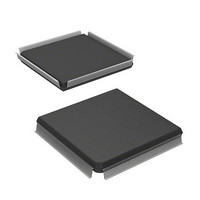HD6417751RF240V Renesas Electronics America, HD6417751RF240V Datasheet - Page 1076

HD6417751RF240V
Manufacturer Part Number
HD6417751RF240V
Description
MPU 1.5/3.3V 0K PB-FREE 256-QFP
Manufacturer
Renesas Electronics America
Series
SuperH® SH7750r
Datasheet
1.D6417751RBP200DV.pdf
(1226 pages)
Specifications of HD6417751RF240V
Core Processor
SH-4
Core Size
32-Bit
Speed
240MHz
Connectivity
EBI/EMI, FIFO, SCI, SmartCard
Peripherals
DMA, POR, WDT
Number Of I /o
39
Program Memory Type
ROMless
Ram Size
48K x 8
Voltage - Supply (vcc/vdd)
1.4 V ~ 1.6 V
Oscillator Type
External
Operating Temperature
-20°C ~ 75°C
Package / Case
256-QFP Exposed Pad, 256-eQFP, 256-HQFP
Lead Free Status / RoHS Status
Lead free / RoHS Compliant
Eeprom Size
-
Program Memory Size
-
Data Converters
-
Available stocks
Company
Part Number
Manufacturer
Quantity
Price
Company:
Part Number:
HD6417751RF240V
Manufacturer:
Renesas Electronics America
Quantity:
10 000
- Current page: 1076 of 1226
- Download datasheet (7Mb)
22. PCI Controller (PCIC)
• When operating as host device
• When operating in non-host mode
22.9.3
To stop all the PCIC's internal clocks, the SLEEP command must be used to transit to standby
mode. When operating in external input pin (PCICLK) operating mode, set the PCICLKSTOP bit
to 1 to stop the PCI bus clock, transit to standby, then, after recovering from standby, clear the
PCICLKSTOP bit to 0 to prevent hazards occuring in the PCI bus clock.
When using the standby command in systems using the PCI bus, first check that the system does
not hang up if the clock is stopped.
Note that the PCIC clock does not stop after transiting to sleep mode.
22.10
When the PCIC is operating in non-host mode, the arbitration pin of the PCI bus can be used as a
port. When using the host functions (arbitration), the port functions cannot be used. The following
six pins can be used: PCIREQ2, PCIREQ3, PCIREQ4, PCIGNT2, PCIGNT3, and PCIGNT4. The
three pins PCIREQ2, PCIREQ3, and PCIREQ4 can be used as I/O ports. The three pins
PCIGNT2, PCIGNT3, and PCIGNT4 can be used as output ports. Data is output in synchronous
with the bus clock (CKIO). Input data is fetched at the rising edge of the bus clock.
Port control is performed by the port control register (PCIPCTR) and port data register
(PCIPDTR). PCIPCTR controls the existence of the port function, the switching ON/OFF of the
pull-up resistance, and the switching between input and output. PCIPDTR performs the
input/output of port data.
Rev.4.00 Oct. 10, 2008 Page 976 of 1122
REJ09B0370-0400
The clock must be stopped only after stopping the operation of external PCI devices connected
to the PCI bus. If you stop the clock prior to stopping the external devices, access from those
external devices will cause a hang-up. Stop the clock only after checking that there is no
problem in respect to the system configuration.
One method of stopping the operation of external PCI devices is to use the PCI power
management, as discussed above. Stop the clock after switching the external PCI devices to
power state D3 (power-down mode). In this case, all external PCI devices must support PCI
power management.
When operating in non-host mode, the PCI bus clock must be in external input operating mode
(PCICLK). In this case, the host device is responsible for stopping and restarting the PCI bus
clock, so it is not necessary to stop the clock using PCICLKR of the PCIC. Make sure that the
CPU receives the interrupt in accordance with the power management sequence.
Compatibility with Standby and Sleep
Port Functions
Related parts for HD6417751RF240V
Image
Part Number
Description
Manufacturer
Datasheet
Request
R

Part Number:
Description:
KIT STARTER FOR M16C/29
Manufacturer:
Renesas Electronics America
Datasheet:

Part Number:
Description:
KIT STARTER FOR R8C/2D
Manufacturer:
Renesas Electronics America
Datasheet:

Part Number:
Description:
R0K33062P STARTER KIT
Manufacturer:
Renesas Electronics America
Datasheet:

Part Number:
Description:
KIT STARTER FOR R8C/23 E8A
Manufacturer:
Renesas Electronics America
Datasheet:

Part Number:
Description:
KIT STARTER FOR R8C/25
Manufacturer:
Renesas Electronics America
Datasheet:

Part Number:
Description:
KIT STARTER H8S2456 SHARPE DSPLY
Manufacturer:
Renesas Electronics America
Datasheet:

Part Number:
Description:
KIT STARTER FOR R8C38C
Manufacturer:
Renesas Electronics America
Datasheet:

Part Number:
Description:
KIT STARTER FOR R8C35C
Manufacturer:
Renesas Electronics America
Datasheet:

Part Number:
Description:
KIT STARTER FOR R8CL3AC+LCD APPS
Manufacturer:
Renesas Electronics America
Datasheet:

Part Number:
Description:
KIT STARTER FOR RX610
Manufacturer:
Renesas Electronics America
Datasheet:

Part Number:
Description:
KIT STARTER FOR R32C/118
Manufacturer:
Renesas Electronics America
Datasheet:

Part Number:
Description:
KIT DEV RSK-R8C/26-29
Manufacturer:
Renesas Electronics America
Datasheet:

Part Number:
Description:
KIT STARTER FOR SH7124
Manufacturer:
Renesas Electronics America
Datasheet:

Part Number:
Description:
KIT STARTER FOR H8SX/1622
Manufacturer:
Renesas Electronics America
Datasheet:

Part Number:
Description:
KIT DEV FOR SH7203
Manufacturer:
Renesas Electronics America
Datasheet:











